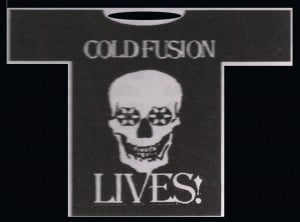“If it had been anything else, we would have said, ‘Oh, people don’t want us to do it, forget it, just leave it alone.’ But this is not in that category. This is interesting science, new science.
If you’ve got any integrity, you don’t give it up.” — Martin Fleischmann
Too Close to The Sun from BBC Horizon recounts the story of cold fusion from the initial announcement in 1989 through developments in 1994 when the video was released. Multiple interviews with major players include Eugene Mallove speaking on the Massachusetts Institute of Technology’s bungling of cold fusion data, misrepresenting the actual creation of excess heat from their test cell by claiming they saw nothing. A later analysis by Mitchell Swartz of JET Energy revealed the blunder, though it was never corrected.
“The cold fusion episode will be looked upon as one of the greatest travesties against justice and understanding that has ever occurred in the history of science,” says Mallove.
Also profiled is Michael McKubre, whose Menlo Park lab SRI reported “up to 500 times excess heat” and Randall Mills then of Thermacore, now of Blacklight Power, “claimed 1000% excess heat” from light-water and nickel cells. At the time, that news prompted another “senior scientist at a national laboratory” to begin work on the phenomenon. In the film, that scientist remains unknown, speaking in the shadows, due to the stigma of this field and the backlash that clean cold fusion research brings.
Professor David Williams describes an early and earnest effort by Harwell Laboratory in Britain which found no effect from the experiments. He revealed his frustration on camera. “At first you assume it’s because you’re not smart enough, or not going long enough, or not doing things quite right, so you try yet more variations, and all the time all these claims are coming in from all sorts of people saying Oh they could do the first time around! You know, you feel like a right bird! Here are all these people saying they switched this cell on and bang, it works…..and we found nothing.”

The ERAB panel selectively chose what evidence to allow by claiming that anything that didn’t fit their conventional theory of nuclear science was impossible. “We wrote a very negative report and concluded that the results that were being presented to us were contrary to everything we had found out about nuclear physics over the last fifty years”, Huizenga said.
He authored the book Cold Fusion: The Scientific Fiasco of the Century claiming an untruth that defined the misinformation campaign’s motto to this day: “There’s no experimental evidence at this point that any nuclear reaction products have been formed. Therefore the claim that cold fusion is a nuclear reaction process without a commensurate amount of nuclear reaction products is simply pathological science.”
Though he attended several cold fusion conferences, and eventually went to a lab with a working cell at Cal Poly Pomona where Professors Robert Bush and Robert Eagleton were researching the effect, Huizenga refused to look at the data showing excess heat, first claiming he was “retired”. Then, after an invitation to stay a while and examine the cell with all his newly freed time, he hemmed, saying he had some “consulting” work to do.
Selectively ignoring data was rampant among the so-called “objective” science community. John Maddox, editor of science journal Nature had decided one year later that cold fusion was over. “I think it will turn out, after two, three years more investigation, that this is just spurious and just unconnected with anything that you would call nuclear fusion. I think that broadly speaking it is dead and it will remain dead for a very long time.”
Speaking on those early days in the U.S., when members’ vitriol stained the American Physical Society, Stanley Pons recalls, “You forget things in time. I can remember that was extremely bitter at that time. I thought we’d been treated extremely unjustly, which I still do. I think the critics were not operating in the bounds of sanity, and I think we were victimized in that respect. So I was quite bitter at the time and I’ve just chose to ignore it and just go on. I really don’t have any feelings about it anymore; it’s just a non-issue now.
“I think you become numb,” added Martin Fleischmann.
“You become numb to it, yeah.”
Keiji Kunimatsu, a former student of Martin Fleischmann persuaded Minoru Toyota, of the famed Toyoto car corporation, to fund the pair’s research, setting them up in a lab in the south of France near Nice. Toyota had already been learning about what cold fusion was. Kunimatsu had learned from Fleischmann that “Scientists must do something new which nobody has done before. That way is the spirit of science.”
Fleischman said, “It was a relief to get away from the terrible atmosphere in the United States and to have the opportunity to work totally without public attention for a period of time.”
Although reproducibility of this mercurial reaction continues to plague many labs to this day, a handful of researchers have made huge advances; a few to the point of developing a commercial technology. For these few labs, the clean energy of cold fusion is available on-demand: turn it on when you want, turn it off when you want. When the engineering of these devices finally produces a product, the over two decades of smug pontifications of an errant orthodoxy by the conventional scientific community will at last end.
In 1993, twenty Japanese corporations including Toyota, Hitachi, and Mitsubishi, financed the New Hydrogen Energy Laboratory for a five-year program called Icarus. Martin Fleischmann consulted on the new project.
In celebration of the inauguration of this project, he toasted “To Icarus One, and all the other Icarus’s to follow. And don’t forget, our wings are stuck on with superglue.”

Thank you Martin Fleischmann.
Thank you Stanley Pons.
Thank you Eugene Mallove.
Thanks to you, we will have Cold Fusion Now!
